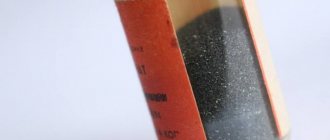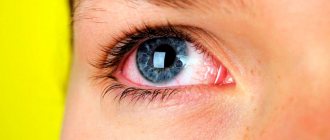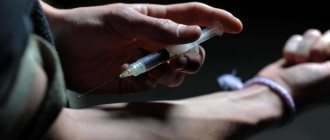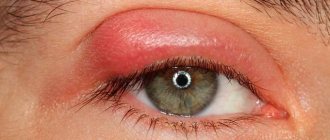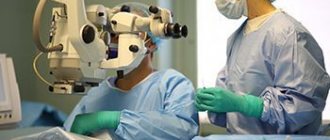Home » Articles » How to get rid of bumps from injections
Back in the third century BC, Hippocrates considered the use of injections an important component of therapeutic measures aimed at treating various types of ailments. At that time, he used a pig's bladder in tandem with a hollow reed tube for injections. Despite this, the syringe in its usual form was invented only in the mid-nineteenth century. Then they began to use reusable variations with a steel piston and a removable needle. Today, injections are given mainly with disposable sterile varieties, which is more justified from a safety standpoint.
Modern doctors readily prescribe intramuscular injections, rightly considering them one of the most effective and safe forms of delivering medications to the body. Despite all the advantages, this method is not ideal due to the presence of a number of side effects. One of the most common is bumps that form on the skin after injections. This article will discuss the nature of such phenomena, the potential danger they pose to the patient’s health, methods of combating them, and preventive measures for the appearance of tumors.
Distinctive features of injections
Standard medical protocols involve the use of intramuscular injections. Today, with their help, doctors can treat most various types of ailments without resorting to prescribing oral medications. Doctors prefer this method of therapy for several reasons:
- Possibility of targeted delivery of drugs. This is important in neurology, surgery, dentistry, anesthesiology and other areas of medicine that require local exposure to medications during treatment.
- No irritation of mucous membranes. Some tablet antibiotics, muscle relaxants and a number of other groups of drugs irritate the mucous membranes of the gastrointestinal tract
- Speed of action of the drug. The same drug, administered as an injection and orally, begins to act at different intervals. Injections go directly into the blood, so they work much faster, this is especially important in the context of painkillers and antipyretics, antispasmodics
The relative disadvantages of using injections are much smaller. The main thing is the need for special knowledge and skills in the person doing the injection. Anyone can take the pill after a doctor’s prescription.
Causes of bumps
In the medical literature, such phenomena are called infiltrates. They are a collection of blood and lymph cells under the skin. Such seals cause their owner a lot of trouble, causing pain and acting as a catalyst for destructive processes. Lumps can appear for several reasons:
- There was trauma to the vessel. In this case, the compaction is usually accompanied by bruising
- The injection was given in the wrong place. Not every place is suitable for injection. The optimal areas are the buttocks, located in the extreme upper quarters, deltoids and quadriceps.
- Failure to comply with technology. The administration of injections should be carried out in accordance with the recommendations of the Ministry of Health and SanPin. They prescribe the puncture at a right angle
- The rate of drug administration or the force of pressure on the piston was exceeded. The medicine should be administered gradually
- During the injection, a nerve ending was damaged. Experienced specialists know the locations of large nerve nodes and try to avoid them
- The length and diameter of the needle were chosen incorrectly. The larger the syringe, the more it injures the tissue during the injection.
- Insufficient disinfection of tissues or its complete absence. In this case, the bumps appear due to infection, which may be more difficult to cure than the original disease.
- Specificity of the administered drug. Some medications can cause bumps due to the fact that they constrict blood vessels and muscle fibers
Rules for intragluteal injection
The rules for performing an intragluteal injection allow you to avoid the risk that the sciatic nerve will be hurt during an injection. Not only health, but also human life may depend on their compliance.
- Before you start piercing the gluteal muscle with a syringe needle, you need to mentally divide the buttock into four approximately equal parts with horizontal and vertical lines passing through its center and intersecting at right angles. These zones are called quadrants.
- The best option would be to inject the injection into the upper outer quadrant: on the left buttock it will be on the far left, on the right buttock it will be on the far right.
- It is important to understand that inserting a needle into the inner or lower quadrant is unacceptable, since this will hit the sciatic nerve and damage it.
- It is necessary to ensure that the needle enters the gluteal muscle strictly vertically when injecting: inserting it at an angle increases the risk of damage to the sciatic nerve.
Compliance with these rules allows you to minimize the risk of damage to the sciatic nerve during the injection. Medical workers who have to perform such manipulations acquire these skills at the very beginning of their specialty training. They also need to be mastered by those who would like to learn how to give injections to their loved ones on their own: the circumstances and nature of the disease may require an urgent injection, or round-the-clock injections every 2-3 hours, and it is not always possible to wait for a visit from a medical professional.
The impact of infiltration on health and well-being
Some people tolerate them without any complications or discomfort, waiting until the lumps begin to resolve naturally, but in most patients the appearance of lumps is accompanied by the following symptoms:
- Pain syndrome that has a pressing, pulling or cutting nature. The pain can be quite severe
- Bruising, hematomas. Occurs if blood vessels are injured during the injection process
- Suppuration. May develop if an infection gets into the blood or tissue after the injection
- A noticeable increase in body temperature, chills, fever. May indicate inflammatory processes in the body
- Itching, burning, redness at the injection site. Such manifestations often occur due to the appearance of allergic reactions to the drug administered during the injection.
If you notice such symptoms, you should seek qualified help from specialists; they will prescribe adequate treatment and help you quickly get rid of negative side effects in the form of painful growths and bruises.
Signs of post-injection injury
The main sign that post-injection damage to the sciatic nerve has occurred is a sharp pain syndrome that occurs during the injection process, the strength of which significantly exceeds the usual sensations from an intramuscular injection. If the nerve has actually been hit, the person will experience pain in the buttock long after they were pricked. The whole leg may hurt. Among the consequences of an injection into the sciatic nerve are:
- irradiation of pain to the lower back or throughout the entire limb;
- development of inflammation in the area of the nerve cord;
- tingling sensation, numbness in the leg;
- disruption of normal sensitivity;
- decreased function of the hip joint, difficulty abducting and adducting the hip;
- pain when sitting, walking;
- lameness;
- mild paresis (paralysis) of the limb;
- impaired Achilles tendon reflexes;
- rotation of the foot inward and inability to turn it correctly. If the damage is deep, complete paralysis may occur.
Not all of the symptoms mentioned appear at the same time: pain is usually the first to appear, all other signs of damage may manifest themselves after one or two days.
If such symptoms of damage to the sciatic nerve appear during an injection that was given at home, you should contact a neurologist as soon as possible. When symptoms appear after injections given on an outpatient basis or in a hospital, the patient should immediately inform the attending physician about this in order to be examined by a specialist who will prescribe the necessary treatment. If it is carried out in a timely and competent manner, this will help to avoid the unpleasant consequences of an injection needle getting into the sciatic nerve.
Conservative treatment
Modern medicine has a wide range of methods and means that can quickly remove the negative consequences of incorrectly or unprofessionally given injections. Here are the most effective:
- External mesh. Apply to the buttocks or other areas of the body where injections were made using a cotton swab, previously soaked in iodine, several times a day. Lines are drawn arbitrarily, their thickness and frequency are not regulated
- Use of gels, ointments, creams and other specialized products. Their task is to quickly resolve the lump by increasing blood and lymph flow to the injection site
- Compresses. The cones are perfectly absorbed under the influence of dioxidin or demixide, which is used to moisten gauze or cotton swabs applied to the seals. Sometimes doctors consider it justified to use pure medical alcohol for the same purpose.
- Lotions. A solution of magnesia (magnesium sulfate), which is applied to them several times a day, has proven itself well.
- Physiotherapy. Treatment in this way involves high-frequency therapy (including ultrasound), infrared photocoagulation
- Massage. The bumps dissolve quite quickly if you act on them in a certain way in the direction of the muscle fibers
- Warming up. In medical practice, the removal of seals is carried out using a blue lamp, heating sessions of which are carried out two to three times a day
Diagnosis and traditional treatment
The appearance of sharp pain at the injection site, radiating throughout the entire limb, allows with a 99% probability to assume post-injection injury to the sciatic nerve. The diagnosis can be clarified using special diagnostic techniques. The highest effectiveness is shown by the electroneurography method, with which it is possible to determine the immediate location of the lesion.
Before conducting instrumental diagnostics, it is necessary to relieve pain using painkillers, which include Novocaine, Lidocaine. The dosage of drugs is determined by the doctor depending on the intensity of the pain. Further conservative treatment of post-injection damage to the sciatic nerve includes the use of:
- non-steroidal anti-inflammatory drugs (NSAIDs) - Diclofenac, Ortofen, Voltaren, Movalis;
- aloe in the form of subcutaneous injections;
- muscle relaxants - Sirdalud, Mydocalm, Baklosan;
- vasodilators that improve peripheral blood circulation in the tissues surrounding the sciatic nerve - Halidor, Vinpocetine, Vinpotropil
- vitamins – Milgumma, Folacin.
In the most acute period, the injured limb needs complete rest, for which it must be immobilized, starting from the lower back. In order to speed up the resorption of the infiltrate, you need to keep the affected leg warm.
After the transition of the inflammatory process from acute to subacute, and then into the remission phase, the pain syndrome gradually disappears, and the restoration of normal function of the sciatic nerve begins. This is helped by physiotherapeutic procedures - paraffin and ozokerite applications, mud therapy, hydrotherapy.
To completely restore the normal dynamics of the limb, massage and physical therapy exercises are necessary, which must first be carried out under the guidance of a physical therapy instructor. The main purpose of these exercises is to heal and prevent overexertion: forcing the recovery process can worsen the situation.
Traditional methods
Healers and healers suggest getting rid of seals using the following means:
- Compresses. Cabbage juice is one of the most effective in this regard. It can be used to treat tumors of almost any size. Bodyaga, a mixture of vinegar and raw eggs, and laundry soap are effective.
- Apitherapy. The cones dissolve quite quickly under the influence of honey and propolis tincture, which are applied to the seals several times a day. With the help of these remedies you can get rid of old tumors
- Applying leaves of plants, vegetables and fruits. Apply raw potatoes, aloe leaves, white cabbage (they should be pierced first), banana peels, cranberry leaves
It is optimal to carry out treatment with folk remedies in combination with conservative therapy. This way you can achieve the best effect in the shortest possible time.
When to see a doctor
If you find a lump at the puncture site, this does not mean that you need to immediately run to the doctor. If the following symptoms occur, you should not delay going to the doctor:
- Does not disappear for a long time. You should be concerned if the infiltration does not go away for more than a month
- Suppuration appeared in the area of the lump. In this case, after pressing, liquid will flow out of the puncture
- The appearance of pain on palpation. A particularly alarming symptom in the context of the presence of lumps is a burning sensation.
- General deterioration in health after the patient received the injection. It should be alarming if the condition is accompanied by an increase in temperature, chills and increased swelling
If such symptoms appear, you should not self-medicate. It is much more advisable to seek help from experienced specialists. In such a situation, delays are unacceptable, since bumps are a harbinger of dangerous complications that can cause serious harm to health.
Why are bumps after injections dangerous?
Doctors identify a number of complications, the timely and adequate treatment of which was not carried out. Here are the most dangerous:
- The appearance of abscesses. Such phenomena occur on the butt or in other areas in which bumps from injections were caused by infection
- Blood poisoning. If the injection was performed without disinfection, harmful agents could enter the bloodstream
- Allergic reactions. The appearance of bright red bumps after injections along with difficulty breathing, increased sweating and lacrimation indicates the presence of an allergy caused by the injection. In this case, compaction on the buttocks or in another area is a consequence of it
- Tissue death. Such cases are quite rare. They are the result of abscesses and suppurating seals in the buttocks, which the patient did not want to treat in time.
ethnoscience
When asked by the patient whether it is possible to treat a damaged sciatic nerve at home, the answer is yes. But only after agreeing on the method with a health professional. Non-traditional therapy, as an independent method of recovery, is weakly effective. Its purpose is to generally strengthen the immune system and accelerate the elimination of side effects.
We must treat the gifts of nature with caution. Components in some ointments or lotions have a warming effect and can trigger allergic reactions.
It is recommended to take therapeutic baths with the addition of herbal remedies not only during the treatment of the consequences of an incorrect injection in the area of the sciatic nerve, but also for preventive purposes.
At the end of the therapeutic course, a final examination by a doctor is required. Only a specialist can talk about treatment prognosis. A repeat course is prescribed as necessary. To prevent sciatica from becoming chronic, it must be completely eliminated.
Preventive measures
Putting the following recommendations into practice will help minimize the possibility of lumps appearing after intramuscular administration of the drug:
- Use of sterile syringes whose expiration dates are within acceptable limits
- Removing the needle after administering the drug should follow the same trajectory as the puncture
- Compliance with the rules of disinfection and asepsis
- Oil-based preparations should be heated to the required temperature
To avoid the risk of complications after injections, you should trust their implementation to qualified specialists who fully possess the relevant knowledge, practical skills and sufficient experience. In this case, the possibility of the appearance of neoplasms will be minimized.
What symptoms indicate that the sciatic nerve is affected?
Injury to nerve fibers results in unbearable pain. For a person with a low pain threshold, it is fraught with loss of consciousness.
The main indicators of unsuccessful drug administration are reduced to the following criteria:
- attacks of pain cannot be stopped even after the procedure is completed;
- the nature of the pain will change, it will become paroxysmal, but the injury constantly causes discomfort;
- weakness in the legs, decreased movement activity;
- inability to walk independently;
- partial disruption of the functioning of the locomotor system.
The pain intensifies with pressure on the lower limbs (movement). Inaction can lead to complete paralysis of the patient.
